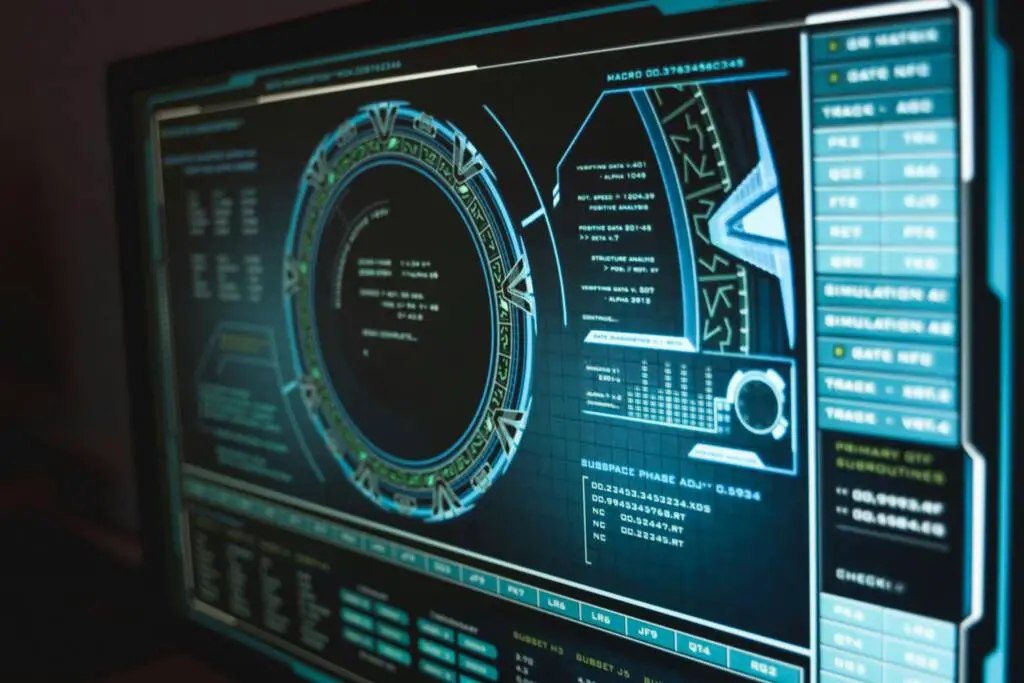Radiology Information Systems

Welcome to 7th Avenue Wellness Blog, where we explore the latest developments in healthcare technology and how they impact our well-being. Today, we delve into a crucial aspect of modern medical infrastructure that plays a pivotal role in patient care and treatment coordination. As we navigate the intricate landscape of radiology information systems (RIS), we aim to shed light on their significance and the value they bring to the healthcare industry. Join us as we unravel the complexities of RIS and gain a deeper understanding of its impact on healthcare delivery.
What does RIS stand for?
Radiology Information System (RIS) is a software solution designed specifically for the radiology department in a healthcare facility. It is an essential tool that helps manage and organize the vast amount of information associated with radiological procedures. RIS streamlines the entire radiology workflow, from scheduling appointments and capturing images to storing patient data and generating reports.
Key Takeaways:
RIS stands for Radiology Information System.
It is a software solution designed for the radiology department in healthcare facilities.
RIS helps manage and organize information related to radiological procedures.
It streamlines the radiology workflow, improving efficiency and accuracy.
Introduction to Radiology Information System (RIS)
A formal definition of RIS:
Radiology Information System (RIS) is a comprehensive software solution that integrates various functionalities to facilitate the management of radiology departments. It is designed to streamline the entire radiology workflow by automating manual tasks, improving communication, and ensuring the efficient flow of information.
How does RIS work?
RIS works by centralizing and consolidating all radiology-related information, making it easily accessible to authorized personnel within the healthcare facility. It starts with the scheduling of radiology appointments, allowing patients to efficiently book and manage their appointments. Once the patient arrives, RIS captures the relevant patient data and associates it with the specific procedure.
During the procedure, RIS integrates with other imaging systems and devices to acquire and process images. It also allows radiologists to dictate reports, which are then transcribed into the system. RIS combines the image data, patient information, and reports into a single record, enhancing accessibility and facilitating collaboration among healthcare professionals.
The importance of RIS in radiology:
Radiology departments handle a significant amount of data on a daily basis. Managing this data manually can be time-consuming, error-prone, and inefficient. RIS plays a vital role in improving the efficiency and accuracy of radiology workflows. It helps reduce administrative tasks, streamline communication, enhance scheduling, and improve the overall quality of care provided to patients.
Benefits of using RIS
Implementing a Radiology Information System (RIS) offers numerous benefits for healthcare facilities and radiology departments.
Let’s take a closer look at some of the key advantages:
Improved Efficiency: RIS automates various tasks such as scheduling, capturing patient data, and generating reports, saving valuable time for healthcare professionals. It streamlines the entire radiology workflow, resulting in increased productivity and shorter turnaround times.
Enhanced Communication: RIS facilitates seamless communication among healthcare professionals involved in radiological procedures. It allows for efficient collaboration, ensuring that everyone has access to the relevant information when needed. This leads to better coordination and improved patient care.
Enhanced Patient Care: RIS improves the overall quality of care provided to patients by ensuring accurate and timely diagnoses. It enables healthcare professionals to have complete access to patient records, including previous images and reports, reducing the risk of misdiagnosis or need for duplicate procedures.
Better Financial Management: RIS includes features for billing and revenue cycle management, helping healthcare facilities streamline their financial processes. It improves accuracy in billing, reduces errors, and ensures timely reimbursements, leading to improved financial outcomes.
Components of a Radiology Information System (RIS)
A Radiology Information System (RIS) consists of several key components that work together to enable effective management of radiology operations.
These components include:
Scheduling: RIS allows for efficient appointment scheduling and management. It ensures that patients are scheduled for the appropriate procedures and that resources, such as equipment and staff, are optimally allocated.
Patient Registration: RIS captures and stores patient demographic information, medical history, and insurance details. This information is essential for accurate billing, as well as for providing personalized care to patients.
Image Acquisition: RIS integrates with imaging devices and systems to acquire, store, and manage radiological images. It ensures that images are captured and associated with the correct patient and procedure.
Reporting: RIS enables radiologists to generate accurate and comprehensive reports based on their interpretations of the images. These reports are vital for communication with referring physicians and for maintaining a complete medical record for each patient.
Billing and Revenue Cycle Management: RIS includes features for billing and financial management. It ensures that procedures are appropriately coded, billed to insurance companies, and paid for in a timely manner.
Integration with Other Systems: RIS integrates with other healthcare systems, such as electronic health records (EHRs) and picture archiving and communication systems (PACS), to enable seamless information exchange and collaboration among different departments.
Analytics and Reporting: RIS provides tools for analyzing and reporting on key performance indicators (KPIs) related to radiology operations. These insights help healthcare organizations make data-driven decisions and improve departmental efficiency.
Key features of RIS
Radiology Information System (RIS) comes equipped with a range of features to enhance the management of radiology operations.
Here are some key features commonly found in RIS:
Appointment Scheduling: RIS enables users to schedule and manage radiology appointments efficiently. It includes features for appointment reminders, resource allocation, and ensuring optimal workflow.
Patient Management: RIS captures and stores patient information, allowing for easy access to medical history, insurance details, and previous radiology reports. It improves patient management and facilitates personalized care.
Image Management: RIS integrates with imaging systems to acquire and store radiological images. It ensures images are associated with the correct patient, procedure, and radiologist’s interpretation.
Reporting and Documentation: RIS allows radiologists to generate accurate and comprehensive reports based on their interpretations. It includes templates, voice recognition capabilities, and tools for efficient report distribution.
Billing and Coding: RIS enables accurate coding of radiological procedures, ensuring proper billing and reimbursement. It includes features for charge capture, claims submission, and revenue cycle management.
Integration with other Systems: RIS seamlessly integrates with other healthcare systems, such as electronic health records (EHRs) and picture archiving and communication systems (PACS), facilitating information exchange and collaboration.
Analytics and Reporting: RIS provides tools for analyzing and reporting on key performance indicators (KPIs) related to radiology operations. It allows for monitoring and evaluating departmental performance and identifying areas for improvement.
How does RIS integrate with other healthcare systems?
Radiology Information System (RIS) plays a crucial role in the integration of various healthcare systems, ensuring smooth information exchange and collaboration.
Here’s how RIS integrates with some of the key systems:
Electronic Health Records (EHRs): RIS integrates with EHRs to provide comprehensive patient records. It ensures that radiology reports and images are easily accessible within the patient’s electronic health record, facilitating continuity of care.
Picture Archiving and Communication Systems (PACS): RIS integrates with PACS to seamlessly transfer and manage radiological images. It ensures that images are associated with the correct patient and procedure, making them easily accessible to healthcare professionals.
Billing and Revenue Cycle Management Systems: RIS integrates with billing and revenue cycle management systems to ensure accurate and timely billing. It streamlines the billing process by capturing procedure codes, generating claims, and connecting with insurance providers for reimbursement.
Laboratory Information Systems (LIS): RIS integrates with LIS to exchange information related to diagnostic tests. It allows for smoother communication between the radiology department and the laboratory, ensuring accurate diagnosis and streamlined workflows.
By integrating with these systems, RIS enhances communication, improves patient care, and reduces duplicate data entry. It creates a seamless workflow by enabling healthcare professionals to access critical information and collaborate effectively.
RIS vs. PACS: What’s the difference?
Radiology Information System (RIS) and Picture Archiving and Communication System (PACS) are two distinct but closely related systems used in radiology departments. While they serve different functions, they often work together to optimize radiology operations.
RIS: RIS focuses on managing administrative and business-related tasks within the radiology department. It handles scheduling, patient registration, image acquisition, reporting, and billing. RIS serves as a central hub for radiology information, ensuring efficient workflows, accurate reporting, and streamlined financial processes.
PACS: PACS, on the other hand, is a system dedicated to the storage, retrieval, and distribution of radiological images. It includes features for image capture, storage, viewing, and distribution. PACS enables healthcare professionals to access and interpret images from various modalities, enhancing clinical decision-making and collaboration.
While RIS and PACS have distinct functionalities, they often integrate with each other to provide a comprehensive radiology solution. RIS handles the administrative aspects, while PACS focuses on image management and analysis. Together, they ensure the efficient flow of information and the delivery of high-quality patient care.
How to choose the right RIS for your medical practice?
Selecting the right Radiology Information System (RIS) for your medical practice is crucial to optimize radiology operations, enhance efficiency, and improve patient care.
Here are some key considerations to keep in mind when choosing a RIS:
Evaluate your practice’s needs: Assess your practice’s specific requirements and priorities. Consider factors such as the number of patients, the size of your facility, the scope of your radiology services, and the integration needs with other systems.
Scalability and flexibility: Choose an RIS that can scale with your practice’s growth and adapt to changing needs. Consider whether the system can integrate with new technologies or accommodate future expansions.
Ease of use and user interface: Ensure that the RIS has an intuitive user interface that is easy for your staff to navigate and use efficiently. It should require minimal training and support to get your team up to speed.
Interoperability: Look for an RIS that can seamlessly integrate with other systems, such as electronic health records (EHRs) and picture archiving and communication systems (PACS). Interoperability is crucial for the efficient exchange of information and collaboration across departments.
Vendor support and reputation: Choose a reputable vendor with a proven track record in the healthcare industry. Consider their customer support services, reliability, and commitment to ongoing system updates and improvements.
Price and affordability: Evaluate the cost of the RIS, including upfront investments, ongoing maintenance fees, and additional modules or upgrades. Consider how the system’s benefits align with the investment and ensure it fits within your budget.
By carefully considering these factors and consulting with radiology professionals, you can make an informed decision to select the right RIS for your medical practice.
Implementing RIS in a healthcare facility
Implementing a Radiology Information System (RIS) in a healthcare facility requires careful planning, preparation, and coordination. Here are the key steps involved in the implementation process:
1. Assessing your needs and requirements
Before implementing an RIS, thoroughly assess the needs and requirements of your healthcare facility. Consider the specific workflows, processes, and goals of your radiology department. Identify any challenges or pain points that need to be addressed and establish clear objectives for the implementation.
Considerations for selecting a RIS:
Determine the number of users and their roles within the system.
Analyze the volume and types of radiology procedures performed.
Assess the integration needs with other systems, such as EHRs and PACS.
Consider any regulatory requirements and compliance standards.
Evaluate scalability and the potential for future growth.
2. Planning and preparing for implementation
Develop a detailed implementation plan that outlines the necessary steps, timelines, and responsibilities. Identify key stakeholders, including IT staff, radiologists, administrators, and end-users, and involve them in the planning process. Prepare the infrastructure, such as hardware and network requirements, to support the RIS implementation.
3. Integrating RIS with existing systems
Work closely with the RIS vendor to ensure seamless integration with existing systems, such as EHRs and PACS. Define the data exchange protocols, formats, and standards to enable effective information sharing. Test the integration to ensure smooth communication and data interoperability.
4. Training and education for staff
Train and educate all relevant staff members on how to use the RIS effectively. Provide comprehensive training sessions and resources to familiarize them with the system’s features and workflows. Offer ongoing support and refresher training as needed to ensure adoption and proficiency.
5. Monitoring and evaluating RIS performance
Regularly monitor and evaluate the performance of the implemented RIS. Identify any issues or areas for improvement and work closely with the vendor to address them. Continuously assess user feedback and make necessary adjustments to optimize the system’s functionality and user experience.
Common challenges in implementing RIS
Implementing a Radiology Information System (RIS) can present various challenges for healthcare facilities.
Some of the common challenges include:
Resistance to change: Implementing a new system can encounter resistance from staff who are accustomed to existing workflows. Overcoming resistance may require effective change management strategies and comprehensive staff training.
Integration complexities: Integrating RIS with existing systems, such as EHRs and PACS, can be complex and time-consuming. Ensuring seamless communication and data exchange requires careful planning and coordination.
Data migration: Migrating existing patient data and historical records to the new RIS can be a challenging task. Accurate data migration is critical to maintain continuity of care and prevent any loss or duplication of information.
Vendor support and system updates: Dependence on the RIS vendor for ongoing support, system updates, and maintenance can pose challenges if the vendor fails to deliver reliable and timely services. Selecting a reputable vendor is vital to mitigate this risk.
By anticipating these challenges and having a well-defined implementation plan, healthcare facilities can navigate the process effectively and maximize the benefits of implementing a RIS.
Future trends and advancements in RIS technology
Radiology Information System (RIS) technology continues to evolve, driven by advancements in healthcare and technology.
Here are some future trends and advancements to keep an eye on:
AI and machine learning integration: RIS is expected to incorporate AI and machine learning algorithms to enhance decision support capabilities and automate routine tasks such as report generation and image analysis.
Mobile accessibility: With the increased use of mobile devices in healthcare, RIS is likely to offer mobile apps or web-based interfaces for convenient access to patient data, reporting, and scheduling.
Integration with telemedicine: RIS will likely integrate with telemedicine platforms to enable virtual consultations, remote viewing of images, and real-time collaboration between radiologists and other healthcare professionals.
Enhanced data analytics: RIS will offer advanced analytics capabilities to generate insights from large volumes of radiology data. Predictive analytics and data visualization tools will help in optimizing workflow, resource allocation, and decision-making.
Interoperability and data exchange standards: RIS will continue to improve interoperability with other systems, adhering to standardized data exchange formats, such as HL7 and DICOM, to facilitate seamless integration and collaboration.
As technology advances, RIS will play a crucial role in enabling efficient, accurate, and patient-centric radiology services.
RIS case studies and success stories
Numerous healthcare facilities have successfully implemented the Radiology Information System (RIS) and witnessed significant improvements in efficiency and patient care.
Here are a few case studies highlighting the successes of RIS:
XYZ Healthcare: XYZ Healthcare, a large hospital system, implemented RIS to streamline its radiology operations. They experienced a 25% reduction in patient wait times, a 40% increase in report turnaround speed, and improved collaboration among healthcare professionals.
ABC Imaging Center: ABC Imaging Center, a specialized radiology facility, implemented RIS to improve its scheduling and billing processes. They achieved a 30% reduction in appointment cancellations, a 20% increase in reimbursement rates, and a significant reduction in billing errors.
DEF Medical Group: DEF Medical Group, a multi-location practice, implemented RIS to centralize their radiology operations. They witnessed a 15% increase in patient satisfaction scores, improved communication between radiologists and referring physicians, and enhanced coordination among their various locations.
These case studies demonstrate the tangible benefits that RIS can bring to healthcare facilities. They highlight improvements in efficiency, patient care, financial outcomes, and collaboration among healthcare professionals.
Wrap Up
Radiology Information System (RIS) plays a vital role in managing the vast amount of information associated with radiology departments. It enhances efficiency, improves communication, and ensures the seamless flow of information within healthcare facilities. With its numerous benefits, integration with other systems, and advancements in technology, RIS continues to evolve and shape the future of radiology operations. By carefully considering the needs and requirements of a healthcare facility, selecting the right RIS, and effectively implementing it, healthcare organizations can optimize their radiology workflows and deliver high-quality patient care.
https://7thavewellnessblog.com/?p=3963
https://www.ncbi.nlm.nih.gov/
FAQ’s
1. What is a Radiology Information System (RIS)?
Answer: A Radiology Information System (RIS) is a specialized software system designed to manage medical imaging and associated data within radiology departments and imaging centers. It facilitates the storage, manipulation, and distribution of radiological images and related patient information.
2. What are the key functionalities of a Radiology Information System?
Answer: RIS systems typically offer a range of functionalities including scheduling and tracking of patient appointments, image archiving and retrieval, reporting tools for radiologists, integration with Picture Archiving and Communication Systems (PACS), billing and coding support, and compliance with healthcare regulations such as HIPAA.
3. How does a Radiology Information System improve workflow efficiency?
Answer: By automating various tasks such as appointment scheduling, result reporting, and image management, RIS systems streamline workflow processes in radiology departments. This automation reduces manual errors, enhances communication among healthcare professionals, and ultimately leads to faster and more efficient patient care.
4. What are the benefits of implementing a Radiology Information System in a healthcare facility?
Answer: Implementing a RIS brings numerous benefits including improved productivity and workflow efficiency, enhanced quality of patient care through quicker access to imaging results, better integration with other healthcare IT systems, increased revenue through accurate billing and coding, and improved compliance with regulatory requirements.
5. How does a Radiology Information System contribute to better patient care?
Answer: Radiology Information Systems contribute to better patient care by enabling healthcare providers to access and analyze imaging data quickly and accurately. This leads to timely diagnoses, effective treatment planning, and improved patient outcomes. Additionally, RIS systems facilitate seamless communication and collaboration among radiologists, referring physicians, and other healthcare professionals involved in patient care.








